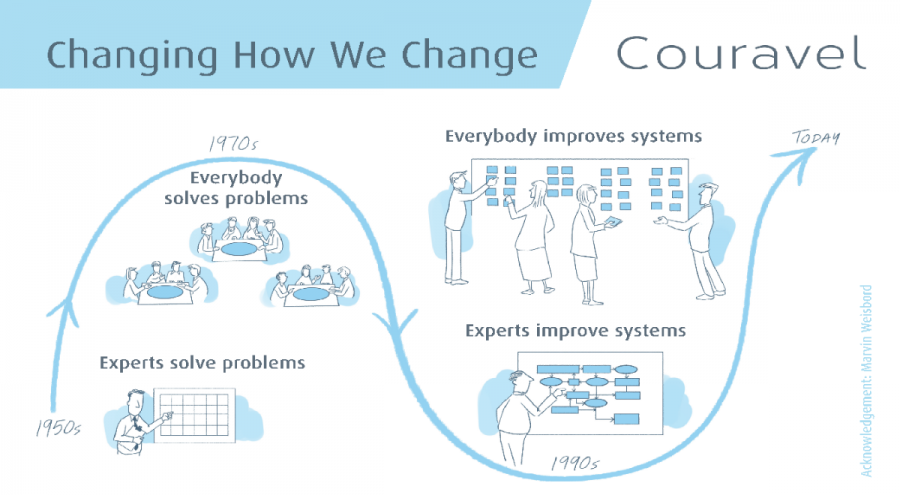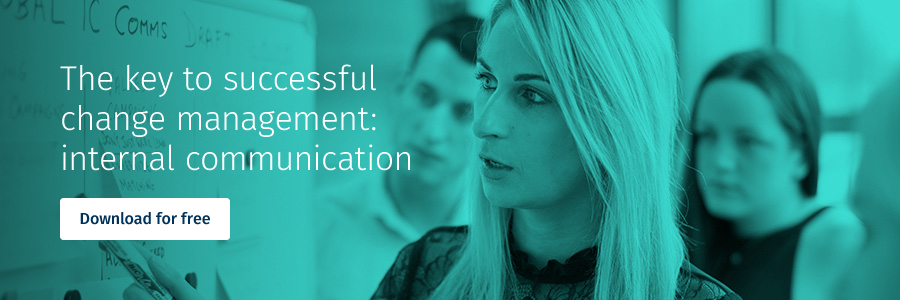Systems thinking and beyond
As we move toward the 2020’s we are moving into a new era in organizational change. The world of work is transforming and we need new approaches and tools to lead change:
- Organizations are operating in increasingly Volatile, Uncertain, Complex and Ambiguous Environments – the VUCA acronym used by military strategists to describe operating in the battlefield. Now it is used to describe the state of the world of work today and the difficulty of planning for change in such a world. Factors that are driving this include globalization, digital transformation, disruptive players with new applications that re-shape the way markets work, climate change, political uncertainty, acts of terrorism and so on.
- There is a growing demand for businesses to make contributions to the communities and environment within which they operate. Social media means many different stakeholders have the power and influence to punish organizations that fail to see and respond to this shift.
- Our understanding of neuroscience means we need to rethink the emphasis we put on different aspects of the way we manage change. If we want people to let go of past practices and buy into new ones we have to pay more attention to the way individuals respond to change. A sense of purpose, control, autonomy, fun, novelty, certainty, fairness, the celebration of past achievements, generating our own ideas, feeling valued and connected are not “nice” but “need-to-haves” to encourage people to collaborate to define new practices.
How we think about change has evolved and adapted over the last 70 years - the graphic borrowed from Marvin Weisbord (Productive Workplaces) tracks evolution in both who and what we use to drive change.

Change used to be handled by experts using Scientific Management techniques in the days when we thought organizations were like machines that could be tweaked to optimize performance.
As we developed our understanding of Group Dynamics we realized the importance of involving people in the process of change. We developed quality circles, focus groups and other participative exercises to try to increase ownership and apply the expertise of people close to the job to analyze how to improve it.
As Systems Thinking developed to cope with the complexity of modern organizations, we shifted focus to the customer and their needs. This realized the importance of the interaction between the organization and its units with the environment, and experts helped redesign processes in manufacturing and office systems.
Today as we move into agile processes and techniques we are operating in a world in which to manage uncertainty and chaos we need to distribute leadership widely within our organizations and get all people working on ways to improve the systems.
Human living systems
But organizations are human living systems. We cannot ignore emotions, power, and relationships which drive the way we think and feel about the organizations we work in. Biases and blind spots exist and by definition cannot be seen unless we co-operate with others who have different perspectives.
So, against this fast-moving and complex background, we need meeting approaches and structures that bring people together in different ways to surface and explore diverse perspectives, establish common ground, recognize and manage conflict. Seven principles govern the way we go about leading change:
- Work in mixed groups and be open to multiple perspectives. We all see a part of the whole system and we see it subjectively. Different voices in the planning process include leaders, owners, managers, employees, and associates.
- Ensure the leadership team appreciates that they might not have all the data required to manage change that they desire.
- Bring in outside data to stimulate the organization to think about the issues - suppliers, customers, and partners. Ensure the organization stays externally sensitive and not insulated in its perspective.
- Invite different groups to diagnose what is going on and what needs to be done.
- Share control of meetings so that people do not feel “done to” when asked to share, contribute or create.
- Distribute decision making amongst a wider group of people to give people a stake in the outcomes from planning sessions and ownership of the way forward.
- Use creative approaches to discussions that enable people to identify new insights and different options. This could involve visioning and visuals, props or other artefacts (bought in for or by participants, or created on the spot), stories and metaphors, cards and sorting exercises, the use of space to create opportunities to view problems from different perspectives, the forming and reforming of groups to work within and across natural work groups, small group discussions (pairs, three, fours) and plenary discussions, adopting personas, scenario planning, role playing and so on.
Making it work
Break the organization of change into short-term and manageable segments and use online or face to face meetings to navigate. For each session the five Ps to think about are:
- Purpose: what is the purpose of this meeting? What do we want people to be thinking, feeling or doing afterwards?
- People: who needs to help shape this purpose and be there? Use the ARE IN acronym developed by Marvin Weisbord and Sandra Janoff to help think about this. For systems change they suggested bringing together people with Authority, Resources, Expertise, Information, and Need.
- Plan: develop a coherent and flexible plan that allows enough time for people to work through issues, surface disagreements and agree how they want to deal with them, find common ground and agree on a way of prioritizing and organizing next steps.
- Place and props: ensure the right environment. Unfortunately, meeting rooms tend to be designed for traditional meeting formats that have served us poorly in the past and are hopeless for the kinds of interactions we need in future. Some things to think about are lots of light, lots of space for small and larger group working, chairs but tables at the side (they restrict cooperation and collaboration), areas to capture ideas and put them in front of everyone so that everyone can work with them.
- Positioning and priming: meetings are threatening and public speaking one of most peoples’ fears – even when we are experienced. To reduce these threats, ensure people know in advance the purpose and plan and who else is going to be there. Create connecting opportunities early in the meetings that do not force people to speak out in front of everyone early in the process but do help establish relationships and get to know others.

